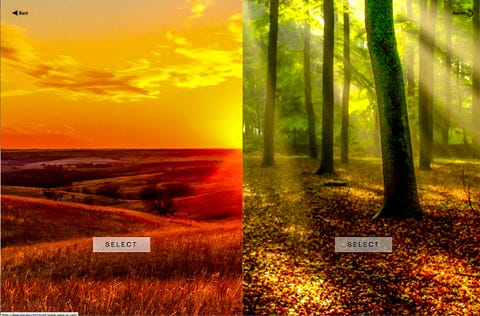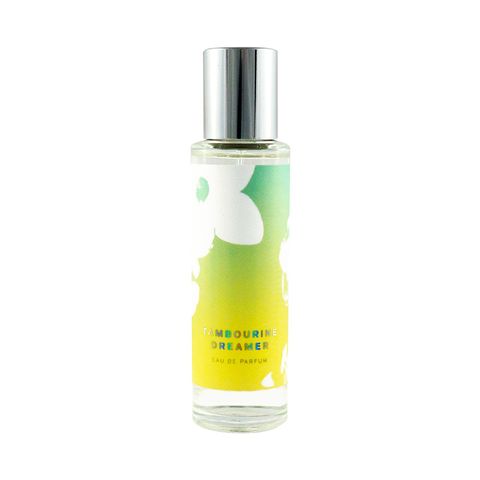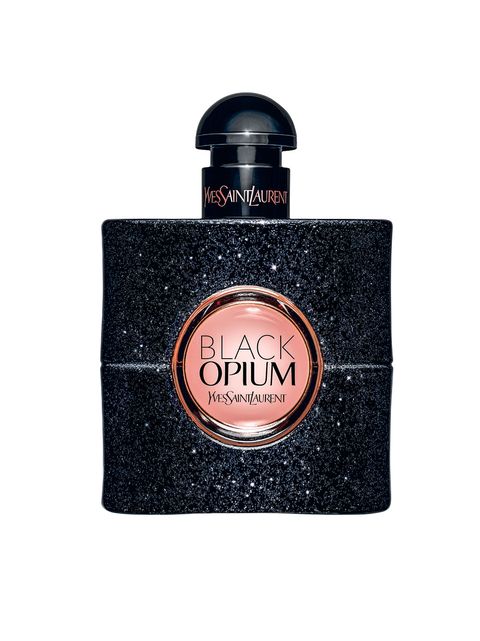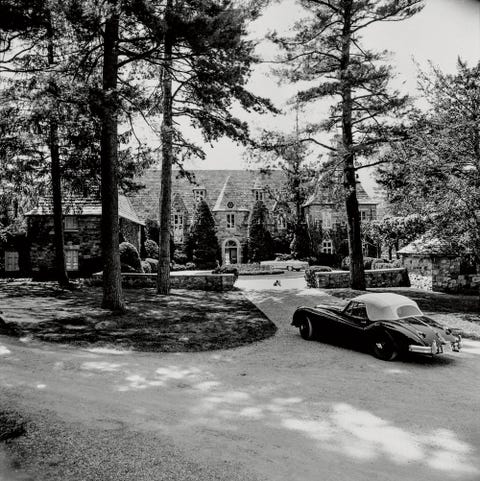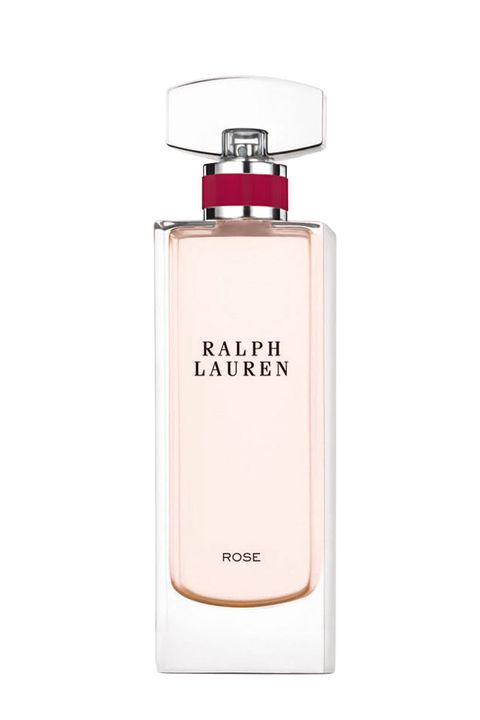Now You Can Find Your Perfect Perfume Without Smelling It First
When cult fashion brand Maison Margiela launched Replica, its first fragrance collection, in the U.S., it was nearly impossible to smell it in a store. With the exception of select Margiela boutiques and Barneys stores, the collection was exclusive to Sephora.com. Translation: You couldn’t spray it before buying it. Ultimately, it didn’t matter.
According to Alexandre Choueiri, president of international designer collections at L’Oréal USA, which licenses the fragrances, “People fell in love with the scents’ stories online.” Unlike most perfume packaging, Replica’s wasn’t just decorative. Each box features a Pinterest-style photo: Beach Walk has a seascape, By the Fireplace, a roaring furnace. The shots, and many more, were on its website too — a contrast from the many sites that tend to rely on images of highly paid actresses and models to create the mood. Another twist: Margiela promoted the collection with the hashtag #SmellsLikeMemories. People started snapping pics of sand, wintry scenes — whatever the scents reminded them of. All this ignited customers’ curiosity, and Replica took off. The fragrances sold well above the company’s projections, even cracking Sephora’s top 10. “It defeated the paradigm that people will only buy perfume if they can smell it first,” says Choueiri.
For the U.S. launch of Yves Saint Laurent’s Black Opium, an edgy new scent, L’Oréal again took an unorthodox online approach. It drummed up excitement through an online campaign bearing the tagline “Too scandalous for stores” and invited customers to get a free sample, delivered in a little black envelope. “People loved the humor,” says Choueiri of the social campaign. While only a few received an LBE, people bought Black Opium in droves. “We caught a lot of buzz,” says Choueiri. For the first week of its launch on Sephora.com, Black Opium was not just the number one-selling fragrance, it was also the number one-selling product on the site. The brand ran out of stock.
The tactic isn’t just savvy for business, it’s also grounded in science, says Howard Eichenbaum, PhD, a neuroscientist at Boston University. Both images and words travel through the brain’s memory and emotion centers — the hippocampus and amygdala,respectively. Language, however, has a longer journey. “This is why images of emotional events can be more powerful than reading about flowers and vanilla fields,” says Eichenbaum. And whether a product is sold in-store or online, it’s easy to be baffled by language. “A petitgrain essence with a cashmere accord?” “A dry down of mocha?” Even Choueiri admits such lofty descriptions of ingredients (or notes) can be confusing. Like with Replica’s images and Black Opium’s intrigue,“ Customers react to emotions — they don’t really seek out or respond to [descriptions of] the notes,” he says.
HOW WE SHOP FOR FRAGRANCE
While a touch screen can’t replace the candy-shop allure of a department-store perfume counter, the business is ripe for a digital revolution, says Eric Korman, founder and CEO of Phlur, a new fragrance brand sold exclusively online.
“The way we shop for fragrance hasn’t changed since World War II,” he says. “When you walk into a department store, there’s so much scent in the room that it’s hard to smell anything.” Sniffing a blotting card can give you an idea, but “it takes a minimum of two hours for a scent to fully develop,” says Korman, who likens the process to throwing a pot of water on a stove. Your body heat causes the top notes to rise first, followed by the middle and base notes. Unlike what happens with paper, the heat and chemistry of your skin ultimately affects the end result. (That’s why, for 10 bucks, Phlur sends you two scent samples lasting about a week each.)
THE NEW SMELL TEST
Bucking convention, these new-school lines use technology to get to what is ultimately an emotional purchase. On Phlur.com, each of the six scents has distinct imagery (Siano, glittery flashes from the ultimate night out; Hanami, a Zen-like interior that type-As will salivate over). They even have their own Spotify soundtracks (Grimes and Zeppelin have their place). Like your Pinterest board, these photos and songs are all clues about how you want to live.
Pinrose, a San Francisco–based fragrance start-up, is also about zeroing in on photos you like in order to find a fragrance you’ll love. Their pictorial-heavy online quiz helps you discover your scent personality. Choose between colors, textures, even makeup looks — your answers all ultimately lead you to three selected perfumes, with names like Cuddle Punk, Garden Gangster, and Tambourine Dreamer. The brand has Pinterest boards and 8tracks playlists for each of the fragrance personalities too.
This sort of personal touch is what’s been missing from fragrance, says Douglas Little, founder of Heretic, a new fragrance brand created with natural ingredients. It may also be the reason the once-booming celebrity perfume craze has slowed down. In 2015, prestige celebrity fragrance sales declined 31 percent from the prior year, according to market research company The NPD Group. “Customers are looking for real emotion or connection,” says Little. (One of the few bright spots on the celeb circuit last year was
Katy Perry’s Mad Potion, in part because she actively tweeted about the scent to her 90 million-plus Katy-Cats in a way that came off as candid and real. Fans bought into Mad Potion: At one point, there were 12 tweets about the scent per second.)
This fall, mainstream labels, like Rag & Bone and the ultimate blue-chip brand Ralph Lauren, are moving away from old tactics (fussy notes, a celebrity spokesperson, an OTT television spot) and instead using simple images to represent their new fragrance collections. Rag & Bone uses stark black and white nature photography, while Ralph Lauren is pure Pinterest porn. His scents are represented by “worlds,” ranging from a leafy English manor to a sparkly image of the Chrysler Building. You simply choose the visual mood that resonates with you. When it comes to fragrance, a picture is worth a thousand notes.
FIVE PATHS TO YOUR NEXT FAVORITE SCENT
Pick between colors, landscapes, even decorating schemes — they’re clues to your new favorite Pinrose scent.
Pinrose Tambourine Dreamer, $55, pinrose.com
A MEMORY
Does it have vanilla? Rose? Does it matter? When a brand bottles one of your happiest memories, odds are you’re going to love it.
Maison Margiela Replica Beach Walk, $125, sephora.com
EXCLUSIVITY
Black Opium was initially an internet exclusive: The brand aired online clips and sent samples in chic black envelopes.
Yves Saint Laurent Beauté Black Opium, $115, yslbeautyus.com
MUSIC
Brands like Phlur and Pinrose are all about creating cool vibes to match their cool scents. Each has its own personalized playlist.
Phlur Hanami, $85, phlur.com
A DREAM WORLD
The fragrance biz has always been about aspiration, but quiet imagery (rather than flashy celebrities) is more of the moment.
Ralph Lauren Collection Rose, $240, ralphlauren.com
This article was originally published as "Click ... Then Sniff" in the November 2016 issue of Cosmopolitan. Click here to subscribe to the digital edition.


